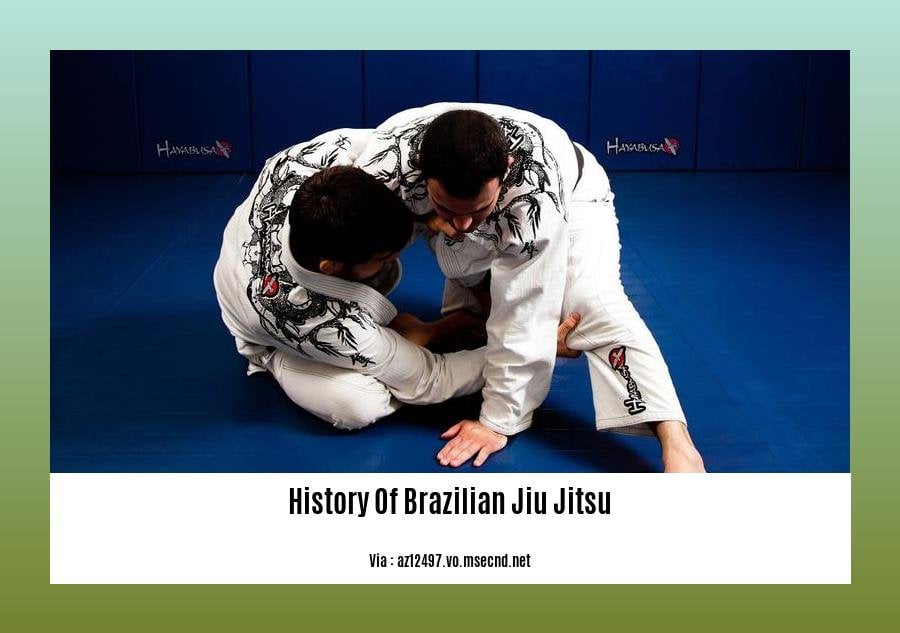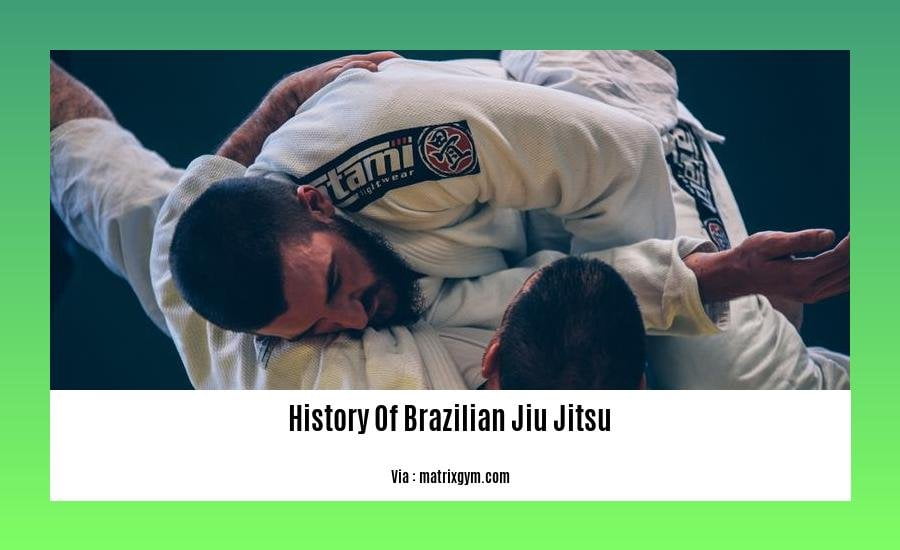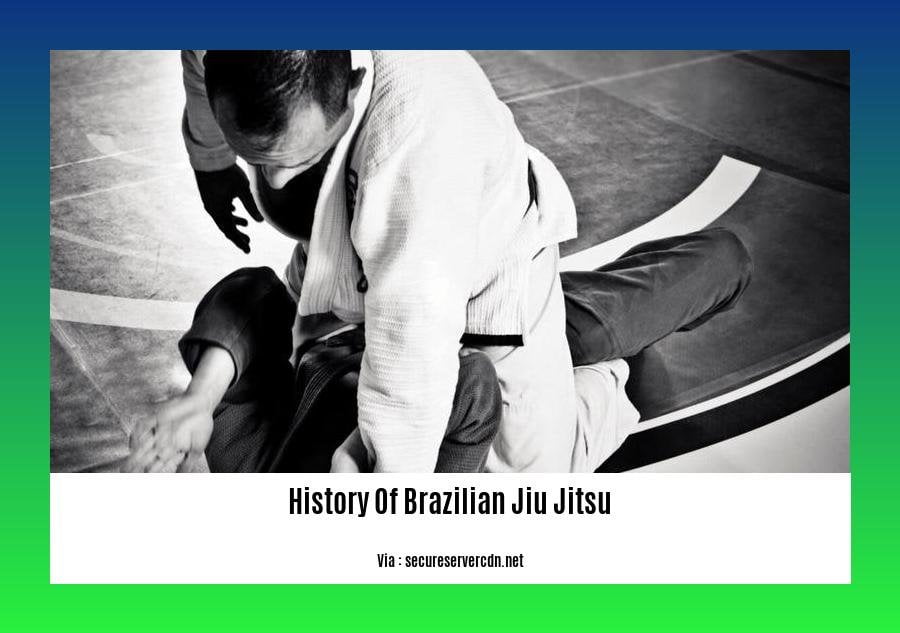Embark on a captivating journey through time as we delve into the rich history of Brazilian Jiu-Jitsu, an art of self-defense that has captivated the world with its techniques and strategies. From its humble origins in early 20th century Brazil to its meteoric rise as a globally recognized martial art, Brazilian Jiu-Jitsu has left an indelible mark on the combat sports landscape. Prepare to uncover the stories of legendary figures, trace the evolution of techniques, and gain a deeper appreciation for the art’s profound impact on the world stage. Join us on this fascinating exploration of [A Journey Through Time: Unraveling the History of Brazilian Jiu-Jitsu].
Key Takeaways:
Brazilian jiu-jitsu (BJJ) is a form of martial arts specializing in grappling and ground fighting.
BJJ was developed in Brazil by the Gracie family during the early 1900s.
BJJ techniques combine elements from Japanese Jujitsu and Kodokan Judo, initially introduced to Carlos Gracie by Mitsuyo Maeda, a Japanese judoka.
BJJ incorporates a wide range of techniques from various martial arts, emphasizing grappling and submissions on the ground.
The origins of BJJ can be traced back to the 1500s, with roots in Japanese Ju-Jitsu, which heavily influenced the development of Judo.
History of Brazilian Jiu-Jitsu

In this article, we’ll take a fascinating journey into the history of Brazilian jiu-jitsu (BJJ) – a martial art that has captivated the world with its unique blend of grappling, ground fighting, and self-defense techniques.
The Gracie Family Legacy
The origins of BJJ can be traced back to the Gracie family, who played a pivotal role in its development and популяризации. The Gracie patriarch, Carlos Gracie, learned the art of judo from Mitsuyo Maeda, a legendary Japanese judoka. Carlos, along with his brothers, modified and refined the techniques, creating a new system that emphasized grappling and ground fighting. This system, known as Gracie Jiu-Jitsu, would later become the foundation of modern BJJ.
The Spread of BJJ
The Gracie family showcased the effectiveness of their martial art in numerous challenge matches, proving its superiority in real-world scenarios. This led to the widespread recognition and acceptance of BJJ, and it began to spread beyond the confines of Brazil. In the 1990s, BJJ gained international prominence, thanks in part to the success of Gracie family members in mixed martial arts (MMA) competitions. Today, BJJ is practiced by millions of people worldwide, and it is considered one of the most effective martial arts for self-defense and competition.
Key Influences on BJJ
Japanese Jiu-Jitsu: The foundation of BJJ lies in Japanese Jiu-Jitsu, which emphasizes the use of throws, locks, and chokes to subdue an opponent.
Judo: Mitsuyo Maeda, a Japanese judoka, taught Carlos Gracie the principles of judo, which heavily influenced the development of BJJ.
Catch Wrestling: Catch wrestling, a style of wrestling popular in the early 20th century, also played a role in the evolution of BJJ.
Notable Figures in BJJ History
Carlos Gracie: The founder of Gracie Jiu-Jitsu and the patriarch of the Gracie family, Carlos Gracie is widely regarded as the father of BJJ.
Helio Gracie: Carlos’ younger brother, Helio Gracie, was a pioneer in the development of BJJ and is credited with refining many of its techniques.
Rickson Gracie: The son of Helio Gracie, Rickson Gracie is considered one of the greatest BJJ practitioners of all time.
BJJ Today
Today, BJJ is a global phenomenon, practiced by people from all walks of life. It is taught in countless academies worldwide and is a staple in mixed martial arts competitions. BJJ has also gained recognition for its self-defense applications, and it is increasingly being taught to law enforcement and military personnel.
To delve into the rich history of public houses in Britain and their socio-cultural significance, explore the history of British pubs. Discover the fascinating evolution of building materials and construction techniques through time by exploring history of building materials timeline. Learn about the innovations and milestones that have shaped the golf industry by reading history of Callaway drivers.
Brazilian Jiu-Jitsu History Timeline

Picture a time when gentlemen graced the Japanese streets in kimonos, showcasing their exquisite martial arts prowess. Fast forward a century, and you’ll find the Brazilian equivalent, the Gracie family, pioneering a self-defense system destined to change combat forever. Embark on a voyage through time as we unravel the rich Brazilian Jiu-Jitsu History Timeline.
Key Takeaways:
BJJ Roots: Brazilian Jiu-Jitsu traces its lineage back to Japanese Kodokan Judo, a martial art developed by Jigoro Kano in the late 19th century.
Gracie Influence: Carlos Gracie, a Brazilian national, learned Judo from Mitsuyo Maeda, a renowned Japanese judoka. Carlos and his family adapted these techniques, creating a system tailored to Brazilian culture and physique.
Helio Gracie’s Innovation: Among Carlos’s sons, Helio Gracie played a pivotal role in refining and evolving the art. Helio compensated for his smaller stature by focusing on technique and leverage, creating the foundation of modern Brazilian Jiu-Jitsu.
UFC Debut and Recognition: The world took notice of BJJ’s effectiveness when Royce Gracie, Helio’s son, dominated the early Ultimate Fighting Championship (UFC) tournaments, showcasing the art’s real-world combat prowess.
Global Expansion: Since the 1990s, BJJ has spread like wildfire across the globe. Today, it’s practiced in countless academies worldwide, serving as a self-defense system, combat sport, and fitness activity.
A Timeline of BJJ’s Evolution:
1882: Jigoro Kano founds the Kodokan Judo Institute in Tokyo, Japan.
1914: Mitsuyo Maeda arrives in Brazil and begins teaching Judo to the Gracie family.
1925: Carlos Gracie establishes the Gracie Academy in Rio de Janeiro, Brazil.
1940s: Helio Gracie develops his unique style of BJJ, emphasizing technique and leverage over strength.
1993: Royce Gracie wins the first UFC tournament, showcasing BJJ’s effectiveness in real-world combat.
1990s: BJJ gains worldwide recognition and begins to spread across the globe.
21st Century: BJJ continues to evolve and grow in popularity, becoming a staple in the world of martial arts.
So, there you have it – a captivating journey through the Brazilian Jiu-Jitsu History Timeline. From its humble beginnings in Japan to its global dominance today, BJJ has come a long way. Its unique blend of technique, leverage, and real-world effectiveness has made it a martial art loved and respected by millions worldwide.
Citations:
History Of Brazilian Jiu Jitsu Wikipedia
Unraveling the captivating history of Brazilian Jiu-Jitsu (BJJ) is akin to embarking on a journey through time, where the art of grappling and ground fighting evolved into a globally recognized combat sport and self-defense system.
Our story begins in the early 20th century, when a Japanese judoka named Mitsuyo Maeda arrived in Brazil and shared his knowledge with Carlos Gracie. Intrigued by the effectiveness of judo, Carlos adapted and refined the techniques to suit the Brazilian culture, laying the foundation for what would later become known as Brazilian Jiu-Jitsu.
Carlos’s younger brother, Helio Gracie, played a crucial role in shaping the identity of BJJ. Due to his smaller stature, Helio focused on developing techniques that emphasized technique and leverage over strength. This approach proved to be highly effective, and BJJ gained recognition for its ability to allow smaller individuals to defend themselves against larger opponents.
In the 1950s and 1960s, Helio’s sons, Rickson, Royce, and Rorion Gracie, further popularized BJJ by demonstrating its effectiveness in numerous challenge matches and competitions. The most notable of these was the Ultimate Fighting Championship (UFC), where Royce Gracie’s dominance showcased the superiority of BJJ in real-world combat situations.
Since then, BJJ has experienced a meteoric rise in popularity, spreading to countries worldwide and becoming a staple in the martial arts landscape. It is now practiced by millions of people, from hobbyists seeking self-defense skills to professional athletes competing in tournaments.
Key Takeaways:
BJJ evolved from judo, brought to Brazil by Mitsuyo Maeda in the early 20th century.
Carlos Gracie adapted and refined judo techniques, creating a unique system suited for Brazilian culture and physique.
Helio Gracie emphasized technique and leverage, making BJJ effective for smaller individuals.
The Gracie family, particularly Rickson, Royce, and Rorion, popularized BJJ through challenge matches and competitions.
BJJ’s effectiveness in real-world combat was demonstrated by Royce Gracie’s dominance in early UFC tournaments.
Today, BJJ is a globally recognized combat sport and self-defense system, practiced by millions worldwide.
Citations:
History of Brazilian Jiu Jitsu – Gracie Barra
FAQ
Q1: How did Brazilian Jiu-Jitsu come into existence?
A1: In the early 1900s, Carlos Gracie, a Brazilian, learned a hybrid martial art from a traveling Japanese judoka named Mitsuyo Maeda. Carlos then passed on these teachings to his sons, Helio and Carlos Jr., who further developed and refined the techniques, creating what we now know as Brazilian Jiu-Jitsu (BJJ).
Q2: What’s the connection between Japanese Jiu-Jitsu and Brazilian Jiu-Jitsu?
A2: BJJ originated from Japanese Kodokan Judo, which itself was adapted from Japanese Ju-Jitsu by Jigoro Kano. Mitsuyo Maeda, a top student of Kano, taught Judo to Carlos Gracie, who modified and refined the techniques, forming the basis of BJJ.
Q3: When did Brazilian Jiu-Jitsu gain popularity?
A3: BJJ gained worldwide recognition in the 1990s when Royce Gracie, Helio Gracie’s son, won the first Ultimate Fighting Championships (UFC) tournaments. These victories showcased the effectiveness of BJJ in real-world combat and sparked a surge in its popularity.
Q4: What are the key principles of Brazilian Jiu-Jitsu?
A4: BJJ emphasizes grappling, ground fighting, and submission holds. It focuses on using technique and leverage to overcome an opponent’s strength and size. The goal is to take the opponent to the ground, gain a dominant position, and use a submission hold to force them to submit.
Q5: How is Brazilian Jiu-Jitsu practiced today?
A5: Today, BJJ is practiced worldwide as a self-defense system, a combat sport, and a fitness activity. It is taught in academies and gyms, and practitioners strive to achieve colored belts to signify their increasing levels of technical knowledge and skill. BJJ tournaments are also held regularly, allowing practitioners to compete and showcase their skills.
- Unlocking Francis Alexander Shields’ Finance Empire: A Comprehensive Biography - July 12, 2025
- Unveiling Francis Alexander Shields: A Business Legacy - July 12, 2025
- Francis Alexander Shields’ Business Career: A Comprehensive Overview - July 12, 2025















